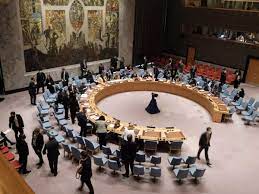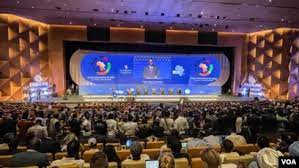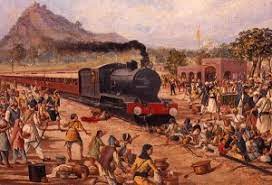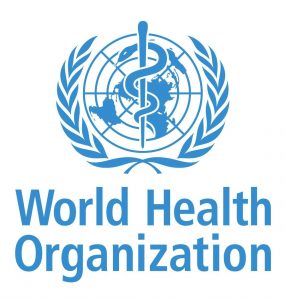Today Current Affairs: 29th October 2022 for UPSC IAS exams, State PSC exams, SSC CGL, State SSC, RRB, Railways, Banking Exam & IBPS, etc
Table of Contents
Emissions Gap Report 2022: UNEP

Ahead of COP27, the United Nations Environment Programme (UNEP) released a report titled ‘Emissions Gap Report 2022: The Closing Window — Climate Crisis Calls for Rapid Transformation of Societies’.
- This is the 13th edition of the UNEP Emissions Gap Report. It assesses the gap between anticipated emissions in 2030 and levels consistent with the 1.5°C and 2°C targets of the Paris Agreement. Every year, the report features ways to bridge the gap.
Findings:
- The top 7 emitters (China, the EU27, India, Indonesia, Brazil, the Russian Federation and the United States of America) plus international transport accounted for 55% of global GHG emissions in 2020.
- For these countries GHG emissions rebounded in 2021, exceeding pre-pandemic 2019 levels.
- Collectively, G20 members are responsible for 75% of global GHG (Greenhouse Gas Emission) emissions.
- The global average per capita GHG emissions was 6.3 tonnes of CO2 equivalent (tCO2e) in 2020.
- India remains far below the world average at 2.4 tCO2e.
- World is falling short of the goals set forth in the Paris Climate Agreement adopted in 2015, with no credible pathway to 1.5°C in place.
- The Paris Agreement defined a global warming limit of 2°C above pre-industrial levels (preferably 1.5°C), which if exceeded, can result in extreme weather events such as extreme heat waves, droughts, water stress, etc.
- National pledges since COP26 (Glasgow, UK) make a negligible difference to predict 2030 emissions.
Impact Of Heatwaves On Children: UNICEF

UNICEF (United Nations Children’s Fund) released a report titled “Coldest Year of the Rest of Their Lives – Protecting children from the escalating impacts of heatwaves”, showing that nearly all the children across the world will be exposed to more frequent and severe heat waves by 2050.
Findings of the UNICEF Report:
- Around 559 million children are exposed to high heatwave frequency and around 624 million children are exposed to one of three other high heat measures – High heatwave duration, High heatwave severity and Extreme high temperatures.
- One in four children lives in areas where the average heatwave event lasts 4.7 days or longer as of 2020.
- This percentage will rise to over three in four children under a low-emission scenario by 2050.
- Children in southern, western and south-eastern Asia, eastern and southern Europe and northern Africa experience heatwaves of longer duration.
- The number of children exposed to high heat waves will quadruple to over two billion by 2050 — up from 24% of children in 2020.
- This amounts to an increase of about 1.5 billion children.
- Virtually every child on earth will face severe heat waves even under a low greenhouse gas emission scenario — with an estimated 1.7°C of warming in 2050.
- At 2.4 degrees of warming, 94% of children will be exposed with only small areas of southern America, central Africa, Australasia and Asia not exposed to high heatwave duration.
- Heat Waves with longer duration pose more risks for children as they spend more time outdoors than adults for — sports and other activities putting them at greater risk for heat injury.
- High temperatures are linked to increased mental health problems in children and adolescents, including post-traumatic stress disorder (PTSD) and depression.
- Extreme heat will essentially affect children’s education and future livelihoods.
- Heatwave risks to health include heat stroke, heat stress, allergy, chronic respiratory conditions, asthma, mosquito-borne disease, cardiovascular disease, undernutrition and diarrhoea.
- Communities are forced to search for and compete over food and water resources as pastures and household income dry up. The resulting migration, displacement and conflict expose children to serious physical harm and violence risks.
UNSC’s Counter-Terrorism Meeting:

The UNSC’s counter-terrorism meeting will be hosted in Mumbai and Delhi on 28 and 29 October, respectively.
- This will be the first such meeting of the UNSC-CTC in India since its establishment in 2001.
- The Permanent Representative of India to the UN serves as the Chair of the CTC for 2022.
- The overarching theme of the meeting would be ‘countering the use of new and emerging technologies for terrorist purposes’.
- The Counter-Terrorism Committee was established by Security Council resolution 1373 adopted unanimously on 28 September 2001 in the wake of the 9/11 terror attacks in the US.
- The Committee was tasked with monitoring implementation of resolution 1373 which requested countries to implement a number of measures aimed at enhancing their legal and institutional ability to counter terrorist activities at home and around the world.
- This includes taking steps to criminalize the financing of terrorism, freezing any funds related to persons involved in acts of terrorism, deny all forms of financial support for terrorist groups, suppress the provision of safe haven, sustenance or support for terrorists and share information with other governments on any groups practicing or planning terrorist acts.
- Besides, the Committee monitors steps taken to cooperate with other governments in the investigation, detection, arrest, extradition and prosecution of those involved in terror acts and criminalizes active and passive assistance for terrorism.
8th Dakar International Forum On Peace And Security:

Minister of State for External Affairs, V. Muraleedharan has recently attended the 8th Dakar International Forum on Peace and Security in Africa.
- This is the first time that India participated at the Ministerial level in the event.
- It was formerly known as the Dakar Peace and Security Forum.
- It annually brings together many African Heads of State and Government, international partners, as well as multiple actors of Peace and Security.
- It was launched during the 2013 Élysée Summit organized by France.
- The first edition of the forum was held in December 2014 in Dakar under the high patronage of Macky SALL, President of the Republic of Senegal.
Infantry Day 2022:

Infantry Day is commemorated on 27 October every year.
- It aims to acknowledge the contributions of Infantry, the largest fighting arm of the Indian Army.
- This day is commemorated to honour the brave soldiers of the infantry who fought and laid down their lives during the India-Pakistan war in 1947.
- The operation was started on October 27, 1947; to protect the people of Kashmir from the Pakistani invaders after Maharaja Hari Singh of Kashmir had signed the Instrument of Accession of Kashmir to India.
- The Indian Air force carried out the task of flying the troops of 1st Sikh Regiment into Srinagar on this day.
DISHA Meeting To Review Progress On Centrally Sponsored Schemes:

Union Minister Dr Jitendra Singh presides over a DISHA meeting to review progress on various Centrally Sponsored Schemes (CSS) being implemented in the Kishtwar district.
- Kishtwar in Jammu and Kashmir has emerged as North India’s power hub with a series of active power projects, in total expected to generate more than 6000 Mega Watt of electricity.
DISHA:
- District Development Coordination and Monitoring Committees (DISHAs) have been formed to ensure better coordination among all the elected representatives in Parliament, State Legislatures and Local Governments (Panchayati Raj Institutions/Municipal Bodies) for efficient and time-bound development.
- It is a government-wide initiative that seeks to promote participative governance and deliberative democracy.
- DISHA seeks to achieve this by facilitating a quarterly review of all development activity at the district level.
- The Chairperson of a DISHA committee is the senior most Member of Parliament (Lok Sabha) elected from the district and nominated by the Ministry of Rural Development.
- DISHA committee meetings will be held on a quarterly basis and will be attended by all elected representatives and officials from the district.
- District Collector is responsible for convening the meeting and ensuring effective and timely follow up
100 Years Of Saka Panja Sahib:

October 30, marks 100 years of the Saka Panja Sahib incident.
- The gurdwara management bodies from both sides of the borderAmritsar-based Shiromani Gurdwara Parbandhak Committee (SGPC) and Pakistan Sikh Gurdwara Parbandhak Committee (PSGPC) will jointly observe the centenary of Shaheedi Saka Panja Sahib (martyrdom massacre), at Hasan Abdal city of Attock district, Punjab province of Pakistan.
- On October 30, 1922 two Sikhs died and several other Sikh protesters, including women, were injured at Hasan Abdal railway station after the railway authorities under the then-British government refused to stop the train ferrying Sikh prisoners from Amritsar to Attock.
- The Sikhs from nearby Panja Sahib wanted to serve langar (community kitchen food) to the Sikh prisoners but were told by the station master at Hasan Abdal station that the train would not stop at the station.
- In protest, the Sikhs squatted on the railway tracks and as the train approached, the Sikhs, who were determined to halt the train, continued to stay put, demanding their right to serve langar to the Sikh prisoners.
- The train finally came to a screeching halt, but only after crushing many of Sikh protesters of whom Bhai Karam Singh and Bhai Partap Singh died after sustaining serious injuries.
- Since then, both Sikhs are hailed as martyrs of Saka Panja Sahib who sacrificed their lives fighting for rights of Sikhs against the British.
Global TB Report 2022 : WHO

The World Health Organization’s (WHO) 2022 Global TB report, stated that the COVID-19 pandemic has set back years of progress on nearly every TB indicator.
- Global TB Report 2022: It provides a comprehensive and up-to-date assessment of the TB epidemic and of progress in prevention, diagnosis and treatment of the disease, at global, regional and country levels.
- This is done in the context of global TB commitments, strategies and targets.
- An estimated 10.6 million people increased by above 4 per cent from 2020 while the burden of drug-resistant TB (DR-TB) increased by three per cent in the same duration.
Tuberculosis (TB):
- It is a Infectious disease usually caused by Mycobacterium tuberculosis (MTB) bacteria.
- Tuberculosis generally affects the lungs, but it can also affect other parts of the body. Prevention of TB involves screening those at high risk, early detection and treatment of cases, and vaccination with the Bacillus Calmette-Guérin (BCG) vaccine.
- Every year, TB kills approximately 220,000 people in India and 1.6 million people worldwide.
India’s First Indigenous Overhauser (OVH) Magnetometer:

Indian scientists have recently developed an Overhauser Magnetometer.
- The Indian Institute of Geomagnetism (IIG), an autonomous research institution under Department of Science & Technology, Government of India, has developed the magnetometer as part of its technology development program.
- It will pave way for reducing the cost of sampling and sensing experiments essential for geomagnetic sampling.
- The performance of this indigenously made magnetometer is at par with a commercial OVH sensor that is currently installed at the magnetic observatories of IIG.
- Overhauser Magnetometer is one of the most accurate magnetometers extensively used by all magnetic observatories around the world.
- They are known for their higher accuracy, higher sensitivity, and efficient power consumption and hence find applications in all magnetic observatories worldwide as well as in international space programs.
- It has so far been imported for such purposes in India.




